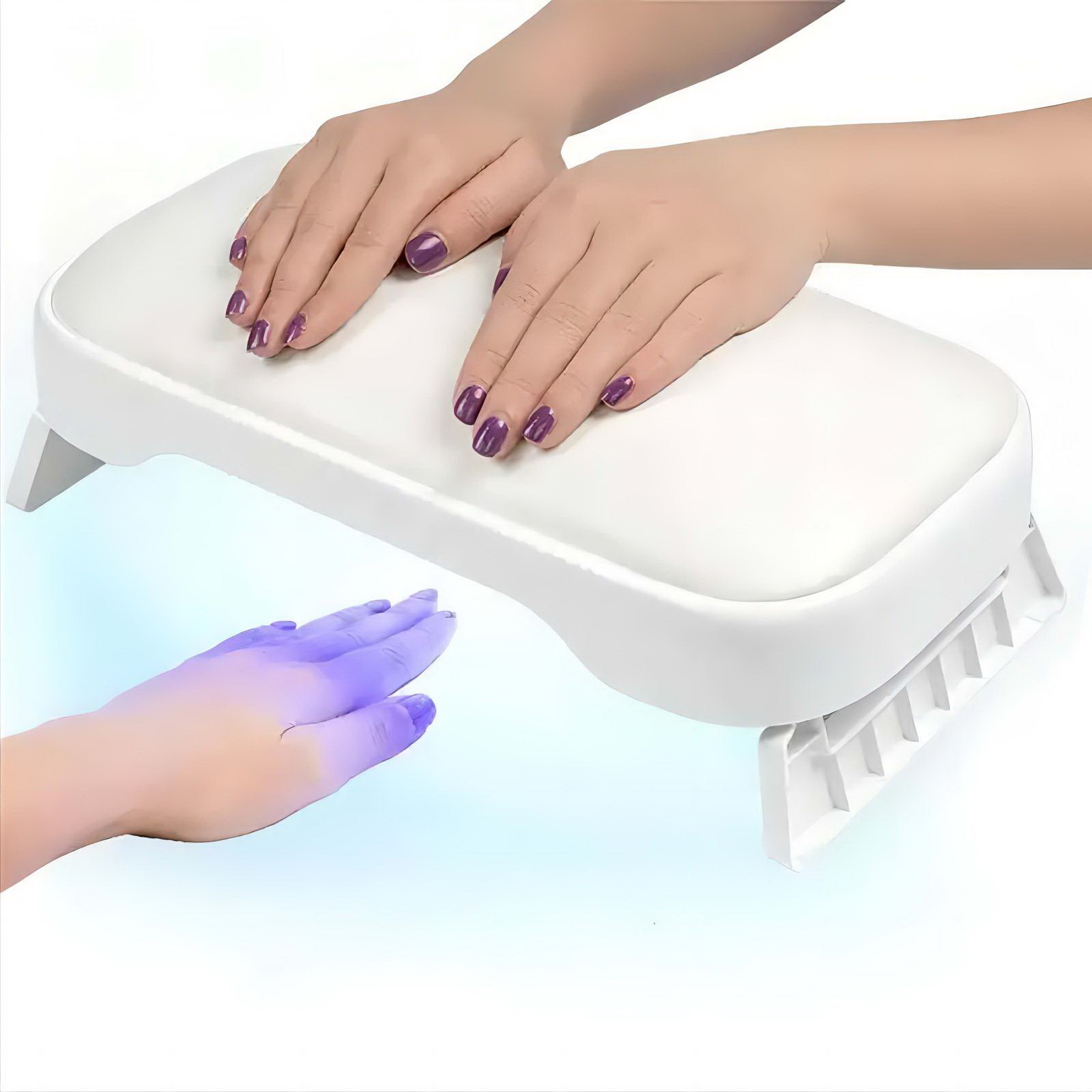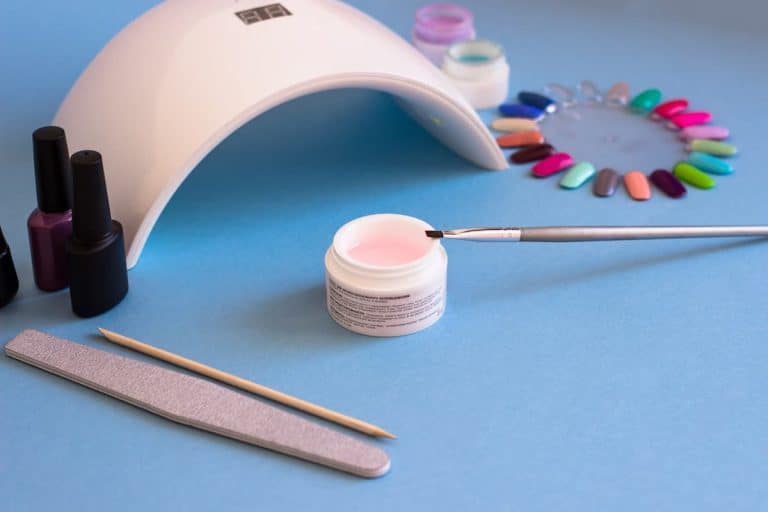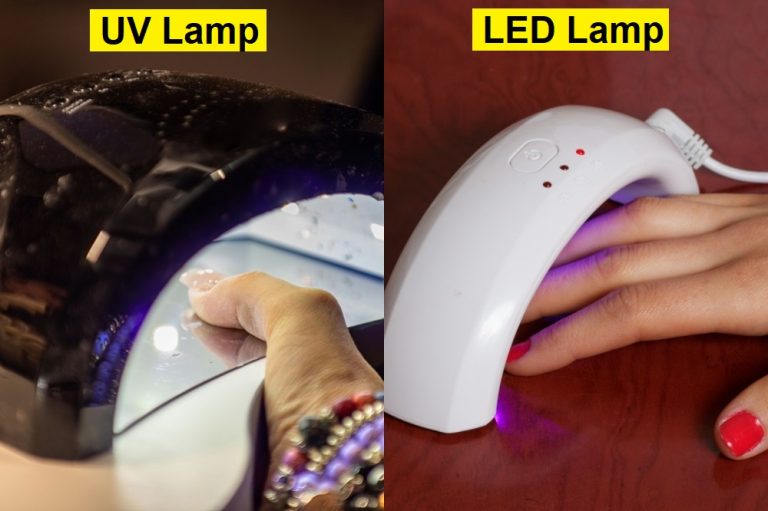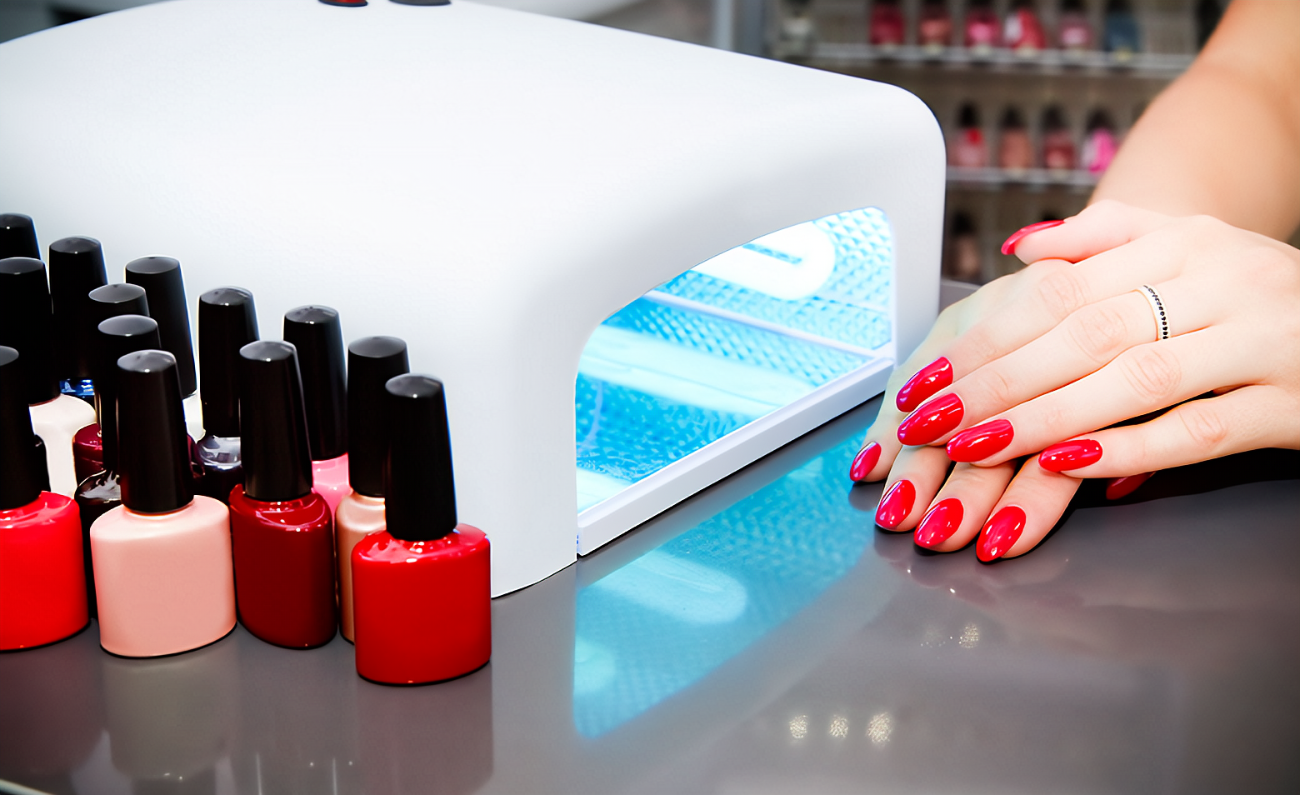Welcome to IKS Beauty, your trusted provider of customized nail products. With over a decade of experience in the nail industry, we understand the importance of ensuring the safety of home UV nail lamps. In this article, we will delve into the facts and risks associated with using these lamps for your at-home manicures. Are home UV nail lamps truly safe, or do they pose potential hazards? Join us as we explore the topic and provide you with valuable insights to make informed decisions about your nail care routine.
What are Home UV Nail Lamps?
UV nail lamps refer to devices commonly used in at-home nail care routines. These lamps emit UV (ultraviolet) light, which is utilized in the nail curing and drying process. Understanding the functionality and purpose of these lamps is essential for safe and effective use during your manicures.
UV light plays a crucial role in the polymerization process of gel nail products. When exposed to UV rays, the gel polish or gel extensions on the nails harden and dry, creating a long-lasting and durable finish. UV nail lamps provide the necessary light wavelength and intensity required to activate the photo-initiators present in the gel products, resulting in the curing process. This allows for faster and more efficient drying compared to traditional air drying methods.
It’s important to note that not all nail products require UV light for curing. Some newer gel nail systems utilize LED (Light Emitting Diode) lamps, which offer similar functionality but with a different light wavelength. However, for the purpose of this discussion, we will focus specifically on home UV nail lamps and their associated safety considerations.
What is the Impact of UV Light on Nail Care?
UV light plays a significant role in the nail care process, particularly in the curing and drying of nail products. Understanding the effects of UV light on your manicure is crucial for ensuring optimal results and addressing any potential concerns.
1. Hardening and Drying Nail Polish: One of the primary functions of UV light in nail care is to harden and dry nail polish, especially gel-based products. When UV light is applied to the nails, it activates the photo-initiators present in the gel polish, causing a chemical reaction that results in curing. This process allows the polish to harden and dry quickly, resulting in a long-lasting and chip-resistant finish.
2. Impact on Nail Color and Texture: UV light can have certain effects on the color and texture of nail products. For instance, exposure to UV rays may cause certain gel polishes to slightly change their color or appear more vibrant. It’s important to note that this effect is generally minimal and varies depending on the specific brand and formulation of the gel polish used. Additionally, UV exposure can help create a smooth and glossy finish, enhancing the overall appearance of the manicure.
While UV light is essential for achieving the desired results with gel-based nail products, it’s crucial to follow recommended exposure times and proper usage guidelines to ensure both safety and the desired outcome. In the following sections, we will delve further into the safety considerations associated with home UV nail lamps to provide a comprehensive understanding of the topic.
How to Use Home UV Nail Lamps
Using a home UV nail lamp correctly is crucial for achieving safe and effective results. Here are some steps and tips to follow when using a home UV nail lamp for your manicure:
1. Step-by-Step Usage Guide:
- Start by preparing your nails, ensuring they are clean and properly prepped for gel application.
- Apply the gel polish or gel extensions according to the manufacturer’s instructions.
- Place your hand or foot inside the UV lamp, positioning the nails directly under the UV light source.
- Activate the UV lamp according to the specific model’s instructions. Most lamps have a timer function that allows you to set the desired curing time.
- Allow the nails to cure for the recommended duration. This typically ranges from 30 seconds to a few minutes, depending on the gel product and lamp specifications.
- After the curing process, carefully remove your hand or foot from the lamp.
2. Proper Placement:
- Ensure that your nails are positioned directly under the UV light source for even and thorough curing.
- Avoid overlapping or touching the neighboring fingers or toes, as this can result in incomplete or uneven curing.
- If you’re using a lamp with a smaller opening, you may need to cure each hand or foot separately to ensure optimal exposure to the UV light.
By following these usage methods and techniques, you can ensure that your home UV nail lamp is utilized correctly, maximizing the effectiveness of the curing process while minimizing any potential risks. In the upcoming sections, we will further explore the safety considerations associated with using home UV nail lamps, helping you make informed decisions about your nail care routine.
Safety of Home UV Nail Lamps
Ensuring the safety of home UV nail lamps is paramount for a positive and risk-free nail care experience. Here, we will discuss the safety considerations associated with these lamps and emphasize the importance of following usage guidelines and precautions. Additionally, we will address potential risks and provide strategies to mitigate them.
1. Adhering to Usage Guidelines:
- It is crucial to read and follow the manufacturer’s instructions and usage guidelines specific to your UV nail lamp model.
- Pay attention to recommended curing times, as excessive exposure to UV light may pose risks to the skin and nails.
- Avoid using the UV lamp for longer periods than recommended, as it can increase the risk of skin damage.
2. Potential Risks and Risk Mitigation:
- UV Radiation: Home UV nail lamps emit UV radiation, which can have potential risks if not properly managed. It is important to note that the UV radiation emitted by these lamps is significantly lower than that of commercial tanning beds or sunlight. However, minimizing direct skin exposure to UV light is still advisable. Consider applying broad-spectrum sunscreen or wearing UV protective gloves to reduce the risk of UV damage.
- Skin Sensitivity: Some individuals may have skin sensitivity or allergies to UV light or certain gel nail products. If you experience any adverse reactions such as redness, itching, or discomfort, discontinue use and consult a dermatologist.
- Eye Protection: Direct exposure to UV light can be harmful to the eyes. To protect your eyes, consider using UV protective goggles or keeping your eyes closed during the curing process.
- Lamp Maintenance: Regularly clean and maintain your UV nail lamp according to the manufacturer’s instructions to ensure its optimal performance and safety.
By adhering to usage guidelines, being aware of potential risks, and implementing appropriate risk mitigation strategies, you can enhance the safety of using home UV nail lamps. In the upcoming sections, we will delve deeper into the topic, addressing UV radiation concerns and comparing the safety aspects of home UV nail lamps with professional-grade alternatives.
UV Radiation and Skin Health
Understanding the impact of UV radiation on the skin is crucial for ensuring the long-term health and well-being of your skin. Here, we will discuss how UV radiation can affect the skin and provide methods to protect your skin from potential harm, including the use of sunscreen.
1. Effects of UV Radiation on the Skin:
- UV radiation, specifically UVA and UVB rays, can penetrate the skin and cause various effects, including premature aging, sunburn, and an increased risk of skin cancer.
- UVA rays are associated with long-term skin damage, leading to wrinkles, sagging, and age spots.
- UVB rays primarily cause sunburn and play a key role in the development of skin cancer.
2. Protecting the Skin from UV Radiation:
- Apply Broad-Spectrum Sunscreen: Prior to using a home UV nail lamp, apply a broad-spectrum sunscreen with a high SPF (Sun Protection Factor) to all exposed skin areas. Ensure the sunscreen protects against both UVA and UVB rays. Reapply as necessary during extended exposure.
- Use Protective Clothing: Consider wearing long-sleeved shirts, pants, and UV-protective gloves to shield the skin from direct UV exposure.
- Seek Shade: Whenever possible, limit direct exposure to sunlight or UV light by seeking shade or creating a shielded environment.
- Regular Skin Checks: Perform regular self-examinations of your skin to monitor any changes, such as new moles or unusual growths. Consult a dermatologist if you notice any concerning changes.
By being aware of the effects of UV radiation on the skin and taking proactive measures to protect yourself, you can minimize the potential risks associated with home UV nail lamps. In the subsequent sections, we will further explore the distinctions between home UV nail lamps and professional-grade alternatives, shedding light on the safety considerations of each option.
Differences Between Home UV Nail Lamps and Professional Nail Lamps
Understanding the distinctions between home UV nail lamps and professional-grade nail lamps is crucial for making informed decisions regarding their safety and reliability. Here, we will compare the characteristics and functionalities of these two types of nail lamps and explain why professional-grade nail lamps are considered safer and more reliable.
1. Characteristics and Functionality:
- Home UV Nail Lamps:
- Designed for personal use at home.
- Typically smaller in size and portable.
- Generally operate with standard wattage and UV light intensity.
- May have limited or preset timer options.
- Suitable for occasional or moderate use.
- Professional Nail Lamps:
- Designed for use in salon or spa settings.
- Larger in size, accommodating multiple hands or feet simultaneously.
- Equipped with higher wattage and UV light intensity for faster and more efficient curing.
- Offer a wider range of timer options, allowing for precise control.
- Built with advanced features and technologies for professional use.
2. Safety and Reliability:
- Professional-grade nail lamps are often considered safer and more reliable due to the following reasons:
- Higher UV Light Output: Professional lamps are designed to deliver a higher output of UV light, ensuring optimal curing while reducing the exposure time required.
- Enhanced Safety Features: Professional lamps may incorporate additional safety features, such as motion sensors, overheat protection, and optimized light distribution to minimize the risk of skin damage.
- Compliance with Industry Standards: Salon-grade nail lamps are subjected to rigorous testing and certification to meet industry safety standards, ensuring a higher level of quality and reliability.
- Trained Professional Oversight: When using professional nail lamps, trained nail technicians can monitor the process, implement appropriate safety measures, and address any concerns or complications promptly.
While home UV nail lamps can be safe when used correctly and in moderation, professional-grade nail lamps are designed with advanced features and undergo stringent testing to provide a higher level of safety and reliability. In the subsequent sections, we will provide guidance on selecting a suitable UV nail lamp for home use and address common questions and concerns related to their safety.
How to Choose a Suitable UV Nail Lamp for Home Use
Selecting the right UV nail lamp for home use is essential for a safe and efficient nail care routine. Here, we will provide key factors and considerations to help you make an informed decision when choosing a UV nail lamp for home use. Additionally, we will recommend high-quality UV nail lamps suitable for home use.
1. Key Factors and Considerations:
- Lamp Size and Design: Consider the size and design of the UV nail lamp to ensure it fits comfortably in your home manicure setup. Opt for a lamp that can accommodate your hand or foot comfortably while providing even exposure to the UV light.
- UV Light Source: Look for a UV nail lamp that utilizes a reputable and reliable UV light source. Consider lamps with UV bulbs or LEDs specifically designed for nail curing, ensuring efficient and effective performance.
- Wattage and UV Intensity: Pay attention to the wattage and UV light intensity of the lamp. Higher wattage and UV intensity generally result in faster and more efficient curing, reducing the exposure time required.
- Timer Options: Choose a UV nail lamp with adjustable timer settings that align with the curing requirements of the gel products you use. This allows for precise control over the curing time.
- Safety Features: Look for UV nail lamps that incorporate safety features such as automatic shut-off, overheat protection, and motion sensors to minimize the risk of skin damage and ensure safe usage.
2. Recommended UV Nail Lamps for Home Use:
- IKS Beauty Pro UV Nail Lamp: Designed specifically for home use, the IKS Beauty Pro UV Nail Lamp offers a compact yet powerful solution for efficient nail curing. With adjustable timer settings, a reputable UV light source, and safety features, it provides a reliable and safe option for at-home manicures.
- SunPro Home UV Nail Lamp: The SunPro Home UV Nail Lamp is a user-friendly option that delivers consistent and even UV light distribution. It offers multiple timer options, a spacious interior, and a high-quality UV light source, ensuring optimal curing while prioritizing safety.
By considering the key factors mentioned above and opting for reputable UV nail lamp brands, you can select a suitable option for home use that prioritizes both safety and performance. In the following sections, we will address common concerns and questions related to the safe use of UV nail lamps at home.
FAQs: Common Questions and Concerns about Using Home UV Nail Lamps
Using a home UV nail lamp may raise various questions and concerns. Here, we address some common queries and provide answers to help users navigate the process more confidently. By addressing these questions, we aim to resolve any potential issues or difficulties that users may encounter.
1. How long should I cure my nails under a home UV nail lamp? The curing time can vary depending on the gel product and the UV nail lamp you’re using. It’s important to follow the manufacturer’s instructions and recommended curing times provided with your gel polish or gel extensions. Typically, curing times range from 30 seconds to a few minutes per layer.
2. Can I use any gel polish with a home UV nail lamp? Home UV nail lamps are generally compatible with most gel polishes available in the market. However, it’s essential to ensure that the gel polish you’re using is specifically formulated for UV curing. Some newer gel systems utilize LED lamps, so be mindful of the lamp type required for your gel polish.
3. How often should I replace the bulbs in my home UV nail lamp? The lifespan of UV bulbs can vary depending on the lamp’s brand and usage. As a general guideline, consider replacing the bulbs every six months to ensure consistent and effective curing. However, it’s advisable to consult the manufacturer’s instructions or recommendations specific to your UV nail lamp.
4. Can I use a home UV nail lamp on my toenails? Yes, home UV nail lamps can be used on toenails. Ensure that your UV nail lamp provides sufficient space and appropriate light exposure for your toenails. Follow the same curing guidelines as you would for your fingernails.
5. Are there any alternatives to using a home UV nail lamp? If you prefer to avoid UV light exposure altogether, you can explore alternative nail systems that utilize LED lamps. LED lamps emit a narrower spectrum of light and typically cure gel products faster than UV nail lamps. However, it’s important to note that LED lamps may not be compatible with all gel polishes.
By addressing these common questions and concerns, we aim to provide clarity and guidance to users who may encounter uncertainties when using home UV nail lamps. In the subsequent sections, we will focus on the maintenance and care of home UV nail lamps, ensuring their longevity and optimal performance.
Maintenance and Care of Home UV Nail Lamps
Proper maintenance and care of your home UV nail lamp are essential for ensuring its longevity and optimal performance. In this section, we will provide methods and recommendations for maintaining and caring for your UV nail lamp effectively, allowing you to enjoy its benefits for an extended period.
1. Cleaning the Lamp:
- Regularly clean the UV lamp to remove any residue or dust buildup that may affect the light output. Use a soft, lint-free cloth or a mild cleaning solution recommended by the manufacturer.
- Avoid using harsh chemicals or abrasive materials that may damage the lamp’s surface or affect its performance.
2. Bulb Replacement:
- Monitor the lifespan of the UV bulbs in your lamp and replace them as needed. Refer to the manufacturer’s instructions for guidance on bulb replacement frequency.
- When replacing bulbs, ensure that you use bulbs specifically designed for your UV nail lamp model. Using incompatible bulbs may result in suboptimal performance or even damage to the lamp.
3. Power Source and Electrical Safety:
- Ensure that the power cord and plug of your UV nail lamp are in good condition. Regularly inspect them for any signs of damage, such as fraying or exposed wires.
- Always plug the lamp into a properly grounded electrical outlet to minimize the risk of electrical hazards.
4. Storage and Handling:
- When not in use, store your UV nail lamp in a clean and dust-free environment, away from excessive heat or moisture.
- Avoid dropping or mishandling the lamp, as this may damage the internal components or affect its overall performance.
5. Following Manufacturer’s Instructions:
- Always refer to the manufacturer’s specific instructions for your UV nail lamp regarding maintenance and care. Each lamp may have unique requirements or recommendations.
By following these maintenance and care practices, you can ensure the longevity and optimal performance of your home UV nail lamp. In the next sections, we will provide best practices and safety recommendations for using home UV nail lamps, empowering you with the knowledge to enjoy safe and beautiful manicures.
Best Practices: Safety Tips for Using Home UV Nail Lamps
To ensure a safe and enjoyable experience when using a home UV nail lamp, it is important to follow best practices and adhere to safety guidelines. In this section, we provide recommendations and tips for safely using a home UV nail lamp, including appropriate usage times and intervals, emphasizing skin and eye protection, and ensuring the safety of the lamp itself.
1. Reasonable Usage Times and Intervals:
- Adhere to the recommended curing times provided by the manufacturer of your gel polish or gel extensions. Avoid excessive exposure to UV light, as prolonged or unnecessary exposure may increase the risk of skin damage.
- Take breaks between manicures to allow your nails and skin to rest and recover from UV light exposure.
2. Skin and Eye Protection:
- Apply a broad-spectrum sunscreen to your hands or wear UV-protective gloves before using the UV nail lamp. This helps protect your skin from potential UV damage.
- Consider using UV-protective goggles or keeping your eyes closed during the curing process to shield your eyes from direct UV light exposure.
3. Lamp Safety Precautions:
- Ensure that the UV nail lamp is placed on a stable and flat surface during use to prevent accidental tipping or falling.
- Regularly inspect the lamp for any signs of damage or malfunction. If you notice any issues, discontinue use and have the lamp inspected or repaired by a qualified professional.
- Follow the manufacturer’s instructions regarding the proper use and care of the lamp to ensure its safety and performance.
By following these best practices and safety tips, you can minimize the potential risks associated with home UV nail lamp usage and enjoy a safe and effective nail care routine. In the subsequent sections, we will summarize the key points discussed and conclude our exploration of the facts and risks of home UV nail lamps.
Conclusion: Ensuring Safe Usage of Home UV Nail Lamps
In conclusion, the safety of home UV nail lamps depends on understanding the facts, following guidelines, and taking appropriate precautions. Through our exploration of the facts and risks associated with these lamps, we have addressed common questions and concerns, empowering you to make informed decisions about their usage.
From understanding the functionality of UV light in the nail care process to discussing the potential risks and safety considerations, we have provided valuable insights into the safe use of home UV nail lamps. It is important to adhere to usage guidelines, such as proper curing times and correct hand or foot placement, to achieve optimal results while minimizing potential risks.
Furthermore, protecting your skin from UV radiation and practicing eye safety are essential. Applying broad-spectrum sunscreen, using UV-protective gloves, and considering UV-protective goggles help shield your skin and eyes from potential harm.
While home UV nail lamps are suitable for personal use, it is worth noting that professional-grade nail lamps offer enhanced safety features and reliability. If you desire an even higher level of safety and performance, professional-grade nail lamps used under the supervision of trained nail technicians may be a preferable option.
By selecting a suitable UV nail lamp for home use, following best practices, and maintaining the lamp properly, you can enjoy a safe and satisfying nail care routine.
Remember, safety is paramount. Adhering to the recommendations, guidelines, and precautions discussed in this article will help ensure the safe usage of home UV nail lamps, allowing you to create beautiful and long-lasting manicures with confidence.
For further assistance or more specific inquiries, do not hesitate to consult a qualified nail care professional or reach out to reputable suppliers like IKS Beauty. Your safety and satisfaction are our top priorities.




